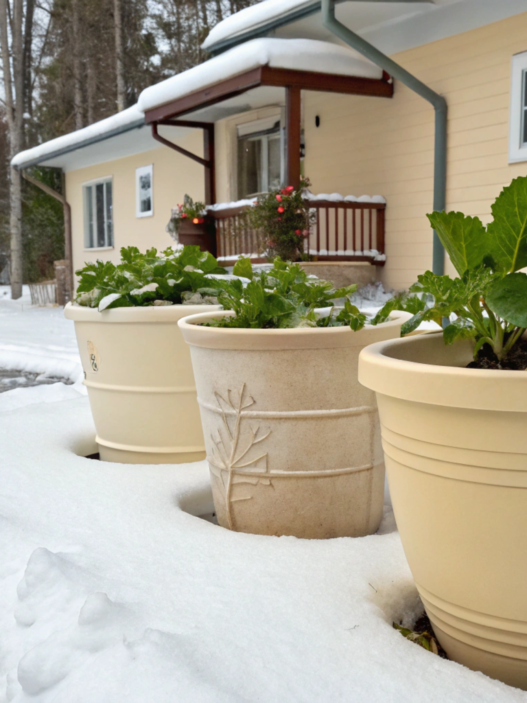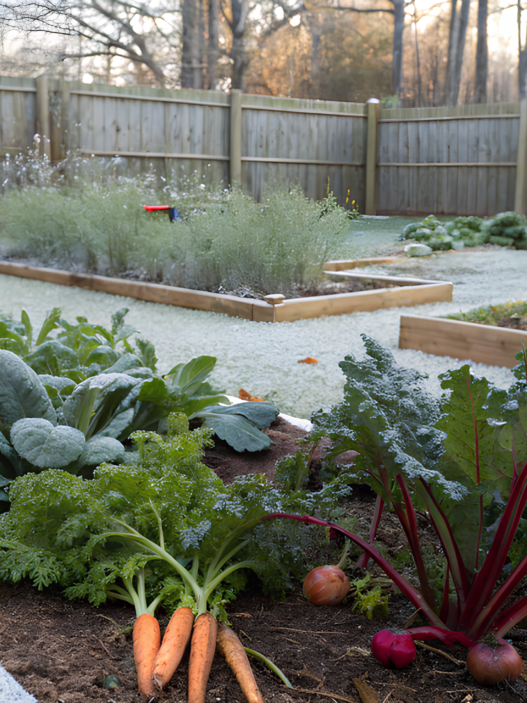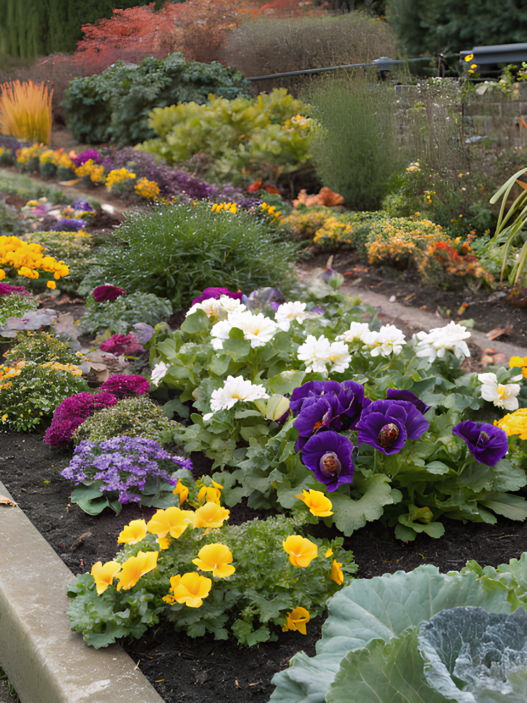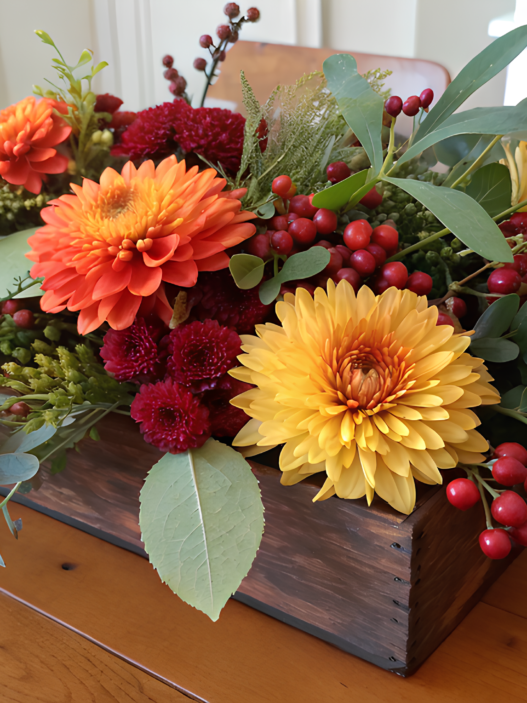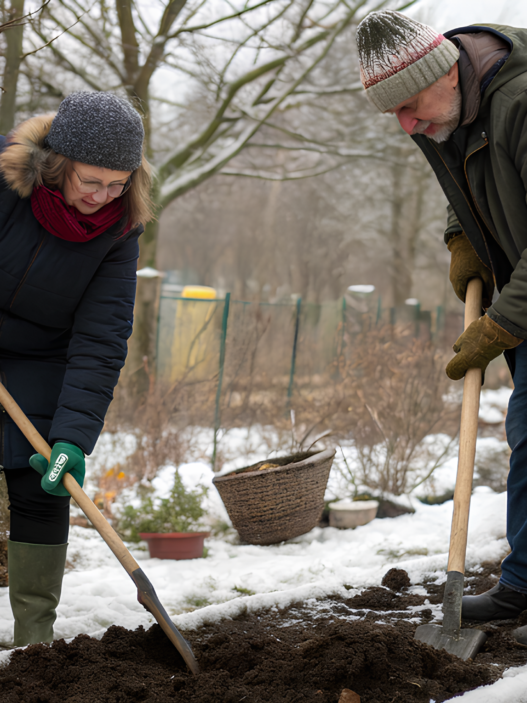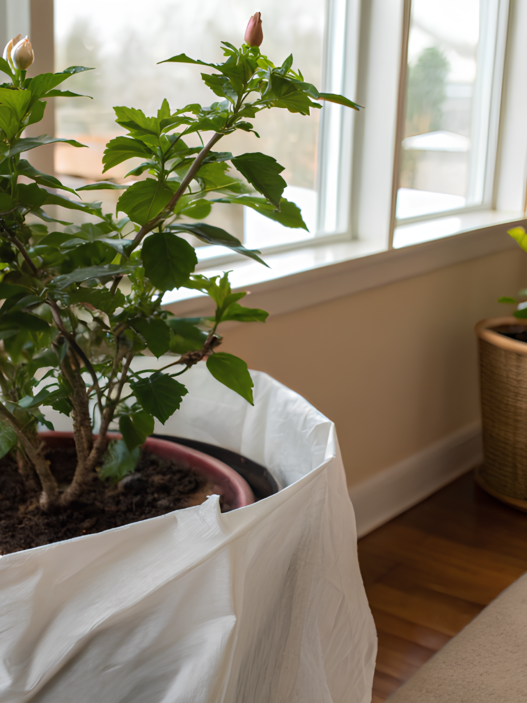Most people are convinced that with the arrival of winter, the gardening season is over. But I hasten to dissuade you from this: what you do in the winter for your garden can either strengthen or weaken your garden in the spring. This can include preparing the soil during the colder months. This is an important thing to do to ensure that your garden thrives and is healthy in the spring. I’ll tell you everything I’ve learned on our small plot and offer proven methods, backed by scientific research, on how to prepare the soil in winter for spring.
Why it’s important to prepare the soil in winter
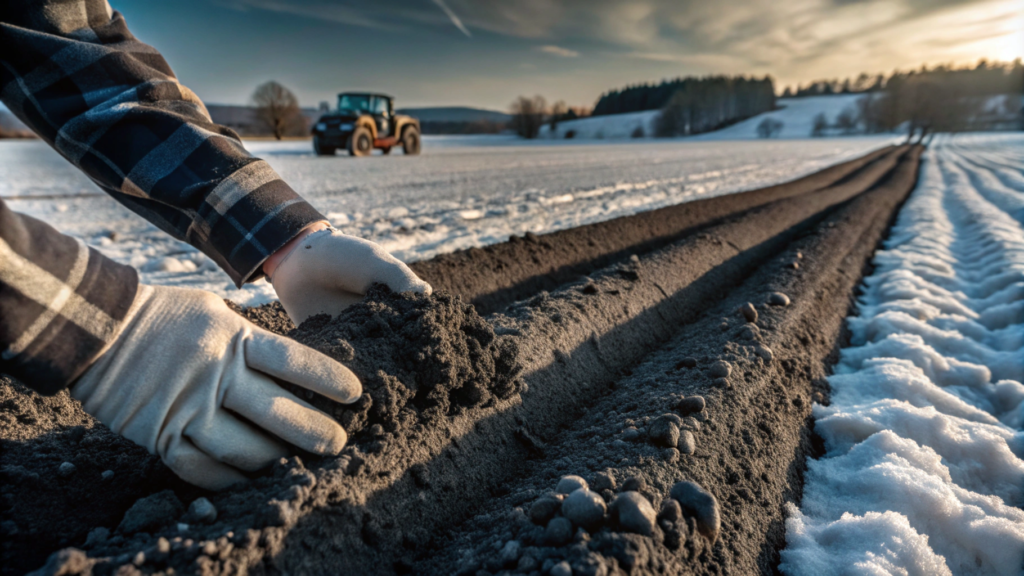
It’s easy to close the garden gate and forget about it until spring, but the same can’t be said for the soil, it’s the soil that needs some attention and care in winter. If you take care of the soil in time, your garden will thank you in spring with healthy plants that will give you a good harvest without adding problems. Preparing the soil in the winter improves its structure, enriches it with nutrients and helps you get rid of weeds before they’ve even had a chance to come up
Plus, healthy soil means less work for you during planting season! Who could turn that down?
Step 1. Clean up debris

The first step is the easiest: remove trash and fall plant debris. Withered plants, fallen leaves and old mulch can be a breeding ground for pests and diseases that your garden doesn’t need for the new season. In my inexperience, I once spent too little time on this process and our garden suffered from pest infestation.
Healthy plant residues can be used for compost. But anything that looks unhealthy or pest-infested should be thrown away without regret. To be on the safe side, I usually burn these types of plant scraps
Step 2. Add organic matter

Adding organic matter is the best thing you can do for your garden’s soil in winter. The fertilizer can be compost, or well-fermented manure or leaf mulch. Such organic matter gives the soil the nutrients it needs, which greatly improves its structure and nourishes the roots of plants well.
Adding compost in winter is good for the soil because it has time to fully decompose by spring planting. It’s like giving the soil a warm blanket for the winter.
According to a USDA study, organic matter helps increase the soil’s ability to retain moisture, which is especially helpful in dry areas. We’ve noticed this in our farm since we started adding a thick layer of compost every winter.
Step 3. Siderates are nature’s green blanket
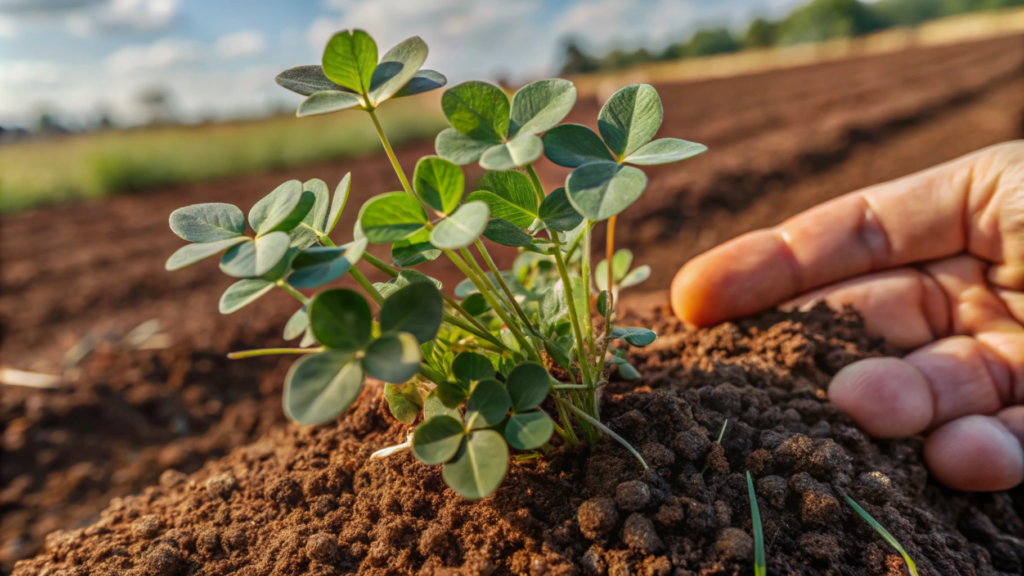
This is a feel good moment for me. Sowing siderates such as clover, rye or vetch in the fall is a good way to improve soil fertility. Siderates protect the soil from erosion, suppress weed growth, and when decomposed, enrich the soil with nutrients such as nitrogen. Well, and no one will deny that it is also a pleasant green corner among the gray winter nature.
On ours, we usually use scarlet clover as the main siderate. It not only fixes nitrogen in the soil, but also blooms beautifully in the spring before we plow it in. It’s a mesmerizing sight.
But it’s not just their appearance that makes them useful and pleasing. According to a University of California study, they can reduce soil erosion by up to 90%. That’s an excellent rate when it comes to maintaining soil integrity.
Step 4. Mulch, test and improve the soil

Mulching your soil in the winter is essential; it protects the soil and prepares it for spring. A good layer of organic mulch (about 8-10 cm) helps insulate the soil, retain moisture and prevent weed seeds from germinating.
We usually use straw or leaves as mulch for the winter. By spring, most of the mulch has already decomposed, adding even more nutrients to the soil. And there are fewer weeds.
But you have to be careful with the choice of mulch. One time I used fresh sawdust, which appeared to pull nitrogen from the soil as it decomposed.
Soil testing is another important step in preparing your soil for spring. You’ll get an idea of your soil’s pH and nutrient levels and can make adjustments if necessary before the season begins.
Soil tests can be purchased on Amazon or you can send a sample to a local lab. Once you know what your soil needs, you can add things like lime to raise the pH or sulfur to lower it
Step 5. Let the soil rest
If you’re a gardener who, like us, likes to be constantly doing something in the garden, you’ll find this step difficult. but sometimes the best thing you can do for your soil is to just let it rest. Everything we previously added – compost, mulch and fertilizer need to decompose, so you don’t want to over-dig the beds in the winter.
It’s nice to watch the snow cover a resting garden, knowing that under a layer of mulch and compost, the soil is becoming more fertile every day.
The soil is resting and nature is doing its thing. In the spring, you’ll have healthy, enriched soil waiting for you, ready for planting.
Step 6. Plan for the spring season
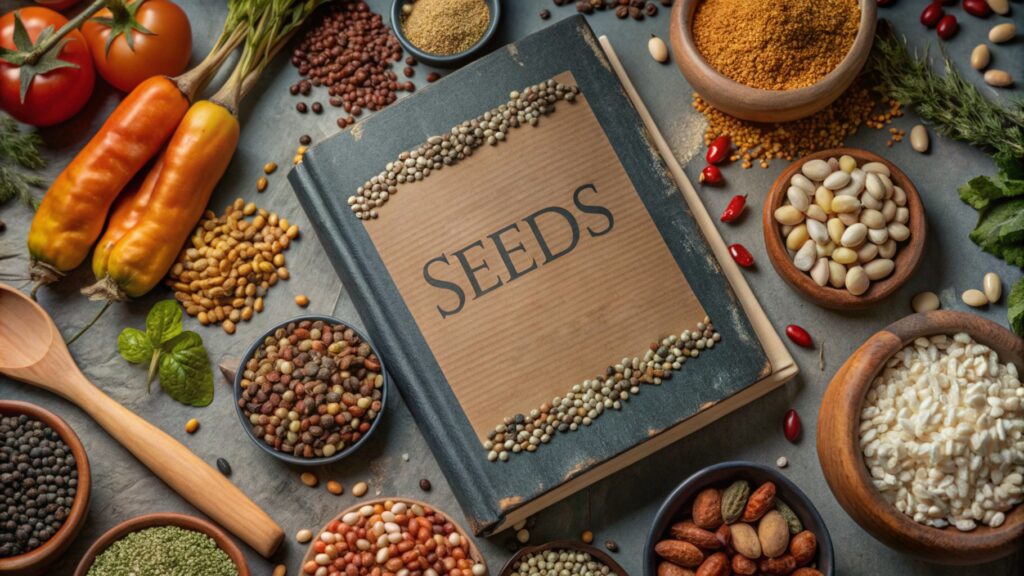
Now that the soil is resting, it’s time to start planning for the upcoming season. I, for example, love to flip through seed catalogs in the winter evenings and dream about what my future garden will look like.
But don’t forget to plan for soil care as well. In the spring, you’ll have to plow in sidedresses, renew the mulch, and maybe do a quick soil test to see how the winter additions have affected its fertility.
Tip. Keep a garden journal of what additives were applied to the soil and when. This will help you always remember what worked well and what can be improved next year.
Recommended products for soil preparation
Here are a few products I recommend to make winter soil preparation easier:
- Garden Waste Composter. A great tool for creating your own compost in the winter.
- Siderate seeds. I recommend scarlet clover or rye for winter use.
- Soil pH test: A must-have tool to figure out what your soil needs before spring planting.
Important admonition. Winter preparation, spring success
Preparing your soil in winter for spring is a good investment in your garden’s future. The results, of course, are not immediately visible, but as spring arrives, everything becomes clear and your efforts to prepare the soil for spring become noticeable. And all thanks to the fact that you paid attention to the soil during the winter. After all, healthy soil is the key to fast growth of healthy plants, fewer pests and a bountiful harvest.
So grab a shovel, a couple bags of compost and maybe some siderate seeds, and take care of your soil over the winter. Spring will come sooner than you think, and your garden will be grateful for all your efforts.If you’re interested in other garden preparation tips, check out our guide on how much food you can grow on a plot of less than an acre.






